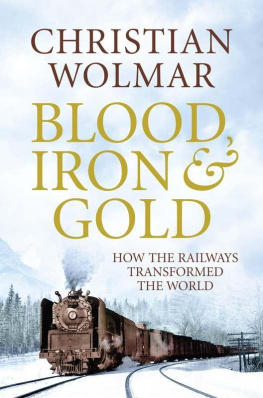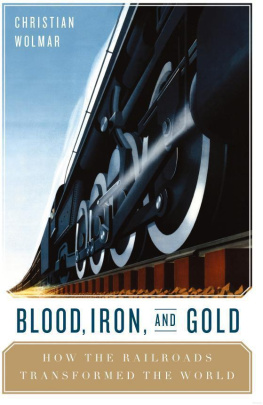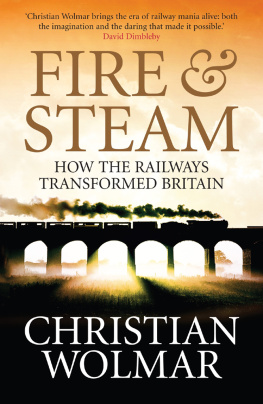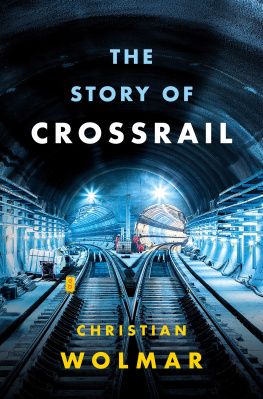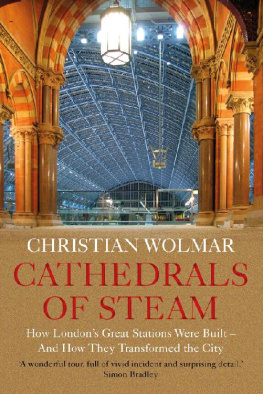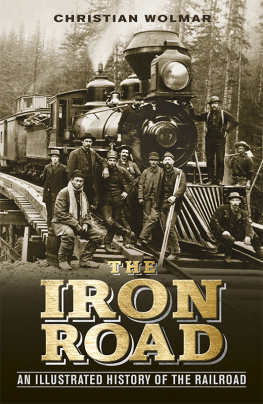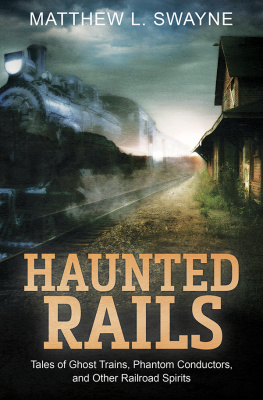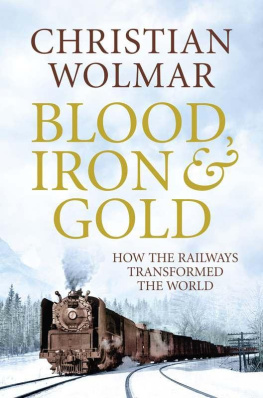Contents
Introduction
O f all the great inventions of the Industrial Revolution, the railroads had the most impact. In a world before rail, travel over any distance was a major undertaking. Regions of even small countries, such as France or England, could be up to seven days journey from the capital, while large countries like the United States, China, or Russia could take months to cross. Until the early 19th century, most people lived their whole lives within the confines of the town or rural area in which they were born, and no one had ever gone faster than a horse could gallop. Travel was simply too difficult and too expensive for the vast majority of people, which in turn limited the spread of ideas and technology.
Lack of mobility was a major barrier to economic and social development. In the absence of rapid transportation, people could starve within only a few hundred miles of plentiful food supplies. The slow transit of goods by horse and cart, or along rivers and canals, meant that perishables had to be consumed very rapidly. Sending a letter across the country took days, and newspapers were a misnomer, since they were effectively full of old information. It took months for people to learn the fate of loved ones at war, and news of major events, from even just a short distance away, filtered through slowly.
Limitations on travel also translated into social restrictionpeople had little choice of spouse, since opportunities to meet potential marriage partners from even neighboring towns were rare. Concepts of time, too, were different before the railroads. Daily life was regulated by the sun, and towns just a few miles east or west of each other could operate on different schedules.
Then the railroads arrived and changed everything. One of their first major impacts was to force countries to standardize their measurements of time, both nationally and internationally, since railroad timetables would otherwise be too confusing. Greenwich Mean Time, the standard by which the world sets its clocks, was created partly as a result of the railroads, and the US was divided into four time zones for the same reason. The Trans-Siberian, the longest railroad in the world, still operates according to Moscow time, even though the line crosses seven time zones on its way to Vladivostok. Punctuality and time-keeping thus became vital, not just with regard to the railroads, but in all spheres of life. The railroads created the structured day, which, prior to their arrival, had been ten hours long, rather than todays norm of eight. In other words, they created the nine-to-five routine.
The railroads overthrew all established concepts of distance and time, and social upheaval followed. The last vestiges of feudalism were swept away, since people were no longer tied to the landindeed, they could now work far from home. People worked standard hours and expected to do so for a wage. Thus, the growth of capitalism went hand in hand with the expansion of the iron road. As people no longer had to find employment near their homes, towns and cities could become far larger than would previously have been possible. Suburban sprawl, often thought of as a product of the automobile age, is, in fact, the result of the development of commuter lines.
Access to long-distance travel, in relative comfort at fairly low cost, changed peoples horizons and opened up their imaginations. What had previously been impossible became routinesuch as going to the seaside or visiting an exhibition. On a social level, the scope for potential marriage partners suddenly broadened, being no longer confined to the immediate vicinity. The exchange of ideas took off as national conferences could now be convened, and the inventions of the Industrial Revolution spreadfirst across Britain, then across the world. Professional sports became feasible as teams and their supporters could travel long distances to play other teams, and league size was limited only by how far a team could travel in a day.
Warfare, too, was revolutionized by the railroads. Armies had traditionally sustained themselves by foraging and pillagingan unreliable practice that made it impossible to keep troops in the same place for long, since supplies, especially for the animals, inevitably ran out. These logistical restrictions meant that battles took place over days rather than weeks or months. With the rise of railroads, armies no longer needed to be constantly on the move, since they could be supplied with food and munitions from the nearest railhead. They were also invaluable in transporting troops quickly to quell domestic riots or launch wars against neighbors.
Nation states became more cohesive as country-wide railroad systems developed. The railroads, often state-owned, were the glue that bound a country together, linking disparate regions and enabling governments to expand their influence in remote, previously lawless areas. The railroads also stimulated large movements of people: Siberia and the American West were both populated after major lines were built. Settlements everywhere congregated around the tracks; indeed, in the US, several towns that were bypassed by the iron road simply moved to be closer to it. Stations became hubs, attracting development and commerce.
As the railroads expanded they brought change in their wake. Railroad companies were often the largest organizations in their respective countries and, due to their size, required new types of business management and even accounting methods. The very engines of capitalismbank loans, stock markets, information on investmentsuddenly became possible. Railroad companies needed banks to fund their expansion and, in turn, banks found railroad companies to be their best clients, since they were the biggest and most ambitious. It was no coincidence that banks and railroad companies were the driving force of mid- and late-19th century capitalism.
Moreover, since the railroad companies employed more workers than any other, it was inevitable that, as the trade union movement was born and developed, the railroads became the industry in which they flourished. Indeed, they were the site of many of the fiercest disputes between capital and labor.
The story of the railroads is not just one of trains and technology, and this richer history, set in a wider social context, is the one this book aims to tell. Despite a strong challenge from the automobile, the railroads remain a brilliant technological feat and a great way to travelbut they are, in fact, much more than that, as every page will show.

T odays railroads are a combination of inventions that were made over millennia, starting with the wheel around 8000 bce and culminating in the steam engine in the late 18th century. By the early 1800s, steam engineswhich began as huge, cumbersome machineswere small enough to be put on wheels, and so the self-propelling steam locomotive was born. The next stage was simply to hitch the locomotive to a trainconsisting either of cars carrying freight, or of coaches bearing passengers.
There were many who argued that train travel would never be popular, or that horses should provide the power, but once the worlds first major railroad, the Liverpool and Manchester line, opened in England in 1830, there was no stopping the spread of the iron road. The United States quickly followed, and the invention spread throughout Europetentatively at first, but then quite rapidly. Lines were opened to enormous fanfare, and people flocked to the new stationsmany to begin routines of journeying to work by rail, many just to enjoy the new technology.


